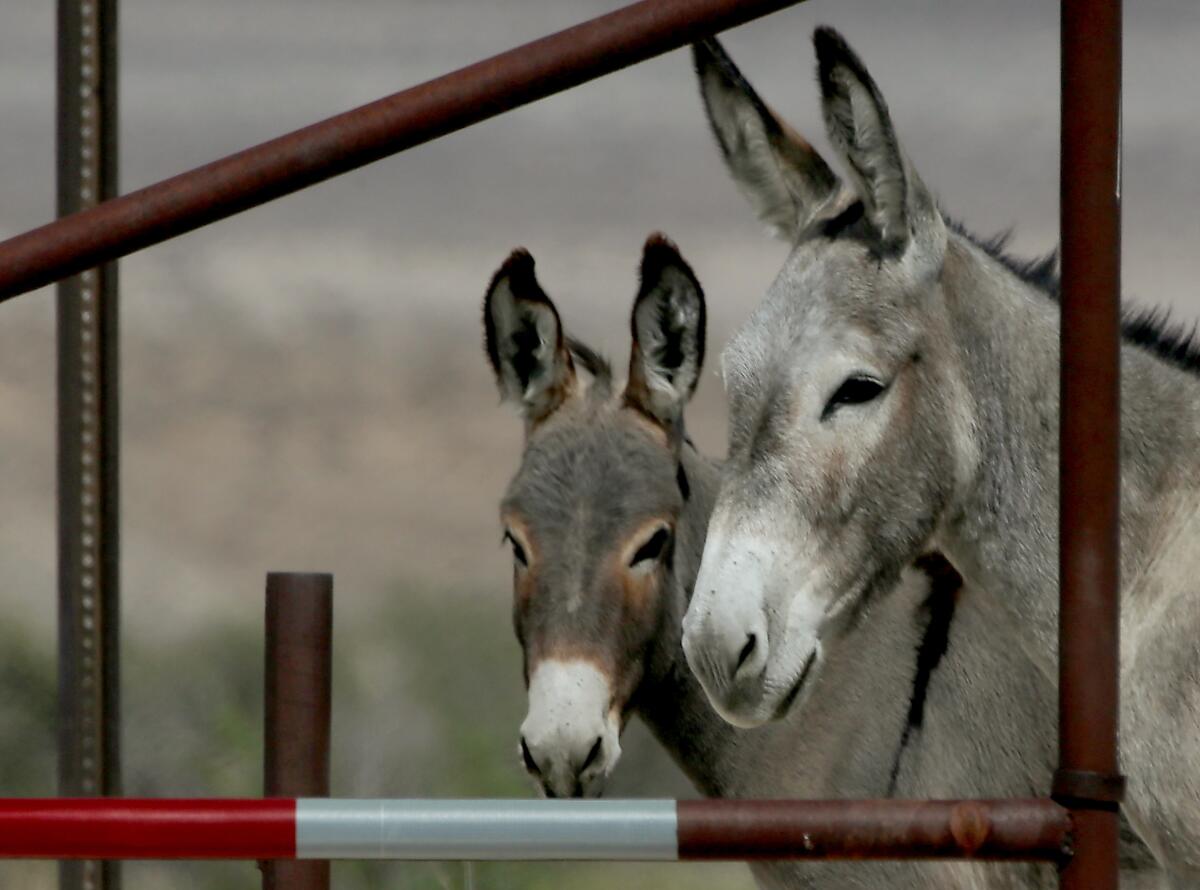Letters to the Editor: Why we should act more humanely toward San Bernadino’s wild burros

- Share via
To the editor: I recall visiting a spring, 25 years ago, down a dirt track somewhere near Joshua Tree. It was pretty trampled. A ranger told us wild burros were the problem, driving out the native fauna. Castration, as suggested by Julie Moreau, founder of Grateful Heart Animal Sanctuary, (“‘Round them up and castrate the boys’”; California conservationists take aim at wild burros,” Sept. 17) sounds a plausible solution. (Personally, I would be OK with shooting them also).
Bob Wieting, Simi Valley
..
To the editor: I was appalled to hear about your article regarding the roundup of wild burros in the Big Bear Valley. These roundups are usually inhumane and separate herd members, sometimes even injuring or killing the young animals that cannot keep up with the rest of the herd.
I totally agree with these residents that live there, as the article states: “The burro control campaigns have also sparked anger and resentment among residents, who view the animals as part of local history, and not an invasive threat.”
I think your state would make more in tourism money from people coming to see the burros than the indigenous plants that are in the area.
Please stop these roundups from happening! There has got to be a better way.
Betty Scheldt, Carlinville, Ill.
..
To the editor: Aware that these beasts, donkeys or burros, have been and still are a true beast of burden in so many countries for many centuries and have, on the whole, lived wretched lives in the most unforgiving climates with brutal treatment being just part of their somber existence, this reader has always felt a deep sympathy and compassion for them.
To read that even here this species is now considered a grave burden is melancholy news. For those wild burros living in the San Bernardino Mountains area, most have lived a good existence thus far and have been warmly accepted by most inhabitants of and tourists to that community. But now with their normal proliferation, others think that it is time to rethink their usefulness and wish them to depart. They are now considered an “invasive species” by some. It is understandable that there is genuine concern for the competition they now pose to struggling native species of plants and their unfortunate natural habits of defecation around waterways. Knowing of the grim circumstances of “roundups” that are so prevalent now, this reader is sickened and can only hope and trust that there is a more humane manner to deal with this concern.
One must always be aware that it is our own human population growth that has and is driving most animal and plant species to extinction, so we ourselves are not entirely blameless. Let us hope that some kind of fertility control will be used in the case of the wild burros as it now in wild horse populations and that we can find some accommodation that will allow the burros to continue to live in this welcoming community. However, I do wish to thank the journalist for bringing all sides of this thorny question to readers to ponder.
Elaine Livesey-Fassel, Los Angeles
..
To the editor: Many thanks to reporter Louis Sahagún for his story on conservationists struggling with the wild burros in Big Bear Valley and for eliciting a spit-take from me while drinking my morning tea. After his opening paragraphs laying out the multiple ways these burros are making a nuisance of themselves ecologically, he summed up the issue succinctly with this: “For San Bernardino Mountains conservationists, the signs are all too clear: Big Bear Valley has a big ass problem.” And I, in turn, laughed my ass off. I doubt any AI app could’ve pulled off that little gem.
Babs Greyhosky, Los Angeles




